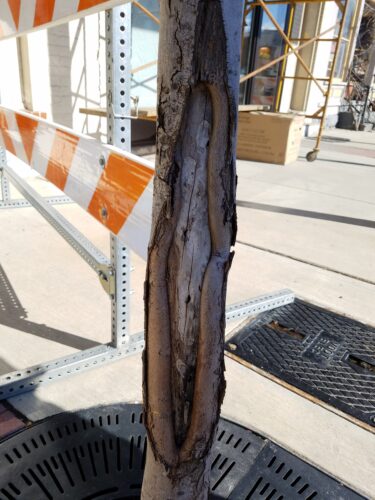
What is Wrong with My Tree?
Many different abiotic and biotic factors can affect the health of individual trees and planted and natural stands. Our Tree and Forest Health Guide is our premier source for forest health concerns and a good place to start.
[posts_table columns="image,title:Title,content:Description,button" post_type="document-library" rows_per_page="-1" include="1404, 1405" term="Audiences:yes" search_box="false" reset_button="false" page_length="false" totals="false" show_footer="false"]
How to Determine What’s Bugging Your Tree
Here are a few steps to help you determine what is happening to your tree.
First, identify the tree species.
Or consult VDOF’s Common Native Trees of Virginia Guide:
[posts_table columns="image,title:Title,cf:id_number:ID,content:Description,button" post_type="document-library" rows_per_page="-1" exclude_term="Audiences:no" term="document-tags:tree-id" search_box="false" reset_button="false" page_length="false" totals="false" show_footer="false"]Describe your symptoms.
- Note where you are seeing the symptoms. For example, are there mushrooms at the base of the tree? Are there exit holes from insects? Are there spots on the leaves?
- Take pictures to document the damage. In general, photos should include the entire plant in question, close-up images showing type of injury, and some item for scale if there is an insect or fungus. Images should be clear, with good lighting.
- Note some basic information like date, location, and number of plants impacted.
Research your symptoms.
- Consult VDOF’s Tree and Forest Health Guide
- Contact your local VDOF Forester
- Submit a sample to the Virginia Tech Plant Disease Clinic and Insect ID Lab
Additional Resources
- Virginia Cooperative Extension Pest Management Guide – Horticultural and Forest Crops
- Virginia Cooperative Extension Forestry Publications
- For information on many forest health disturbances in the Southeastern US, visit the Southern Research Extension Forestry Forest Health Website
- Find your local VDOF Forester
Contact Us
For more information and questions related to overall forest health concerns, e-mail us or use our contact form.
For more information and questions related to urban and community tree health concerns, e-mail us or use our contact form.
